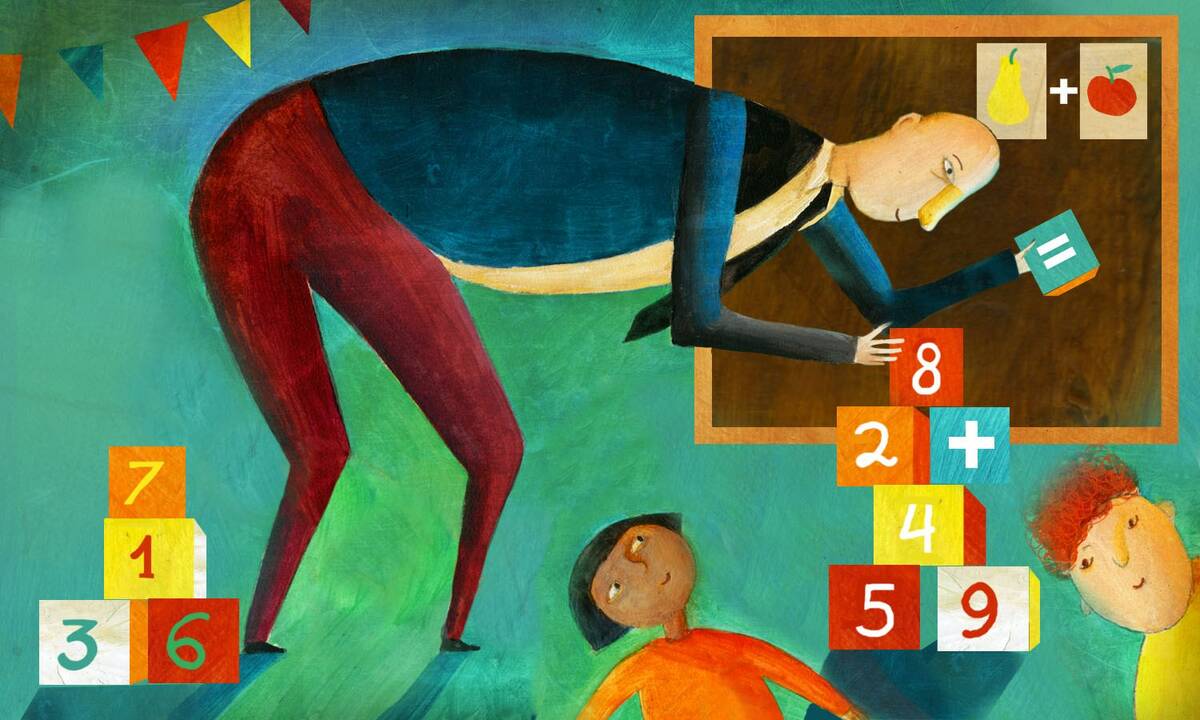But getting teachers to adopt this new curriculum and reform-oriented way of thinking and teaching is no small feat. And it is a challenge that likely sounds familiar to anyone who has tried to bring about a change in thinking and practice inside a large organization.
“Many teachers expect the traditional approaches that worked for them will work for everybody,” says James P. Spillane, a professor in learning and organizational change at Northwestern’s School of Education and Social Policy who has a courtesy appointment in Kellogg’s department of management and organizations. Yet cognitive science research suggests that children benefit from learning mathematical principles and concepts, and not just procedures, at a young age.
Spillane and his collaborators wanted to understand how school leaders worked to get elementary teachers to adopt the new curriculum in ways that engaged their students. They were particularly interested in whether teachers’ beliefs about teaching math were influenced by interactions with their peers.
To find out, the researchers examined survey and interview data from teachers at 14 elementary schools in one school district that was in the midst of adopting a reform-oriented curriculum.
The researchers found that there was no magic bullet—no single strategy that helped teachers change their beliefs about teaching. Rather, it was a network of strategies—changing the organizational structure, adopting a new curriculum that was so different from how teachers had been teaching that it created a need for them to talk to one another, and offering professional development opportunities—that led a majority of teachers to change their beliefs over time about how to teach math.
The results have implications for other organizations looking to change their members’ behavior, Spillane says.
“There may be people out there selling magic bullets,” he says, “but organizations need to take a more holistic approach and think about how various components of their infrastructure work to shape interactions among employees.”
Understanding How Teachers Interact with Peers
The researchers, which included Megan Hopkins at the University of California-San Diego and Tracy Sweet at the University of Maryland, conducted annual surveys in the 14 elementary schools that were adopting the new mathematics curriculum in the school district between 2010 and 2013.
As part of the effort, teachers with leadership responsibilities were offered professional learning opportunities, including a master’s program in mathematics education. The district also implemented several organizational routines at both the district and school levels so that teachers worked regularly with math teacher leaders and school leaders in order to help other teachers understand the curriculum and analyze student work.
The surveys annually measured more than 300 teachers’ beliefs about math instruction (how students should learn, and how teachers should facilitate instruction) and asked the teachers whom they turned to for advice about the new curriculum. The researchers then followed up with in-person interviews with around 30 teachers and school leaders.
Peer Attitudes Can Shape Behavior
The researchers found that by 2015, 60 percent of teachers had developed more reform-oriented beliefs.
Next, they wanted to understand why teachers developed these beliefs.
They found that the best predictor of whether a teacher would develop reform-oriented beliefs was whom they interacted with. Teachers developed more reform-oriented beliefs about teaching math when they interacted more with their peers who reported more reform-oriented beliefs. The opposite was also true.
“This shows that peers matter,” Spillane says. “If we want to change how workers practice, then thinking about how they interact with peers is really important.”
Additionally, those who reported having conversations with peers about the ideas behind the curriculum and new ways of teaching math—rather than just logistics—became more reform-oriented.
“Some teachers would seek out other teachers and say, ‘I have an activity, it’s not working, is there something else that might work?’” he says. “That’s important, but the more important thing is they never went beyond that. They never tried to dig deeper to ask, ‘Why am I using this activity in the first place? Or why are kids struggling with this particular concept?’ Those are the sort of conversations that are fundamental to changing beliefs about teaching math and how kids learn math.”
Instead of simply letting the teachers choose with which peers they discussed the curriculum, the district created organizational routines at both the school and district levels that increased the odds that teachers would interact with those who felt differently about the new curriculum than they did.
For example, the district developed a mathematics leadership committee, which worked across schools to figure out how to support teachers as they implemented the new curriculum.
The district also required every teacher to participate in a professional learning routine along with fellow teachers at a particular grade level, mathematics leadership committee members, and teacher leaders. Within these routines, teachers discussed implementing the new curriculum, efforts to adopt more reform-oriented approaches, and student work.
While previous research by others showed that teachers generally seek out interactions with peers who hold the same beliefs about instruction as they do, that did not happen in this study. Instead, the various components of the district’s educational infrastructure influenced who talked to whom about mathematics instruction.
“This is important, because traditionally in U.S. public schools, the formal organization has been relatively weak in terms of influencing whom teachers talk to about their teaching,” Spillane says. “This work documents that school districts can build formal organizational infrastructures that can influence teachers’ interactions about their teaching. Of course, in order to do that, the school district has to agree on an approach to teaching mathematics to anchor their designing of an organizational infrastructure.”
No Magic Bullet for Changing Organizational Behavior
Various components of the school system’s new organizational infrastructure got teachers talking to their peers and teacher leaders about mathematics. This was key to encouraging change in teachers’ beliefs about their instruction, Spillane says.
Additionally, the new curriculum created a sense of dissonance about mathematics instruction, nudging teachers to reach out to colleagues for help and guidance. The organizational routines and teacher leaders provide structured paths for these interactions.
“Peers are a potentially powerful source for improving practice in organizations, but organizational leaders have to work to support, engage, and channel this,” Spillane says. “To do that leaders have to think about how they can get different components of their organizational infrastructure to work together to enable particular types of interactions among the organization’s members.”




